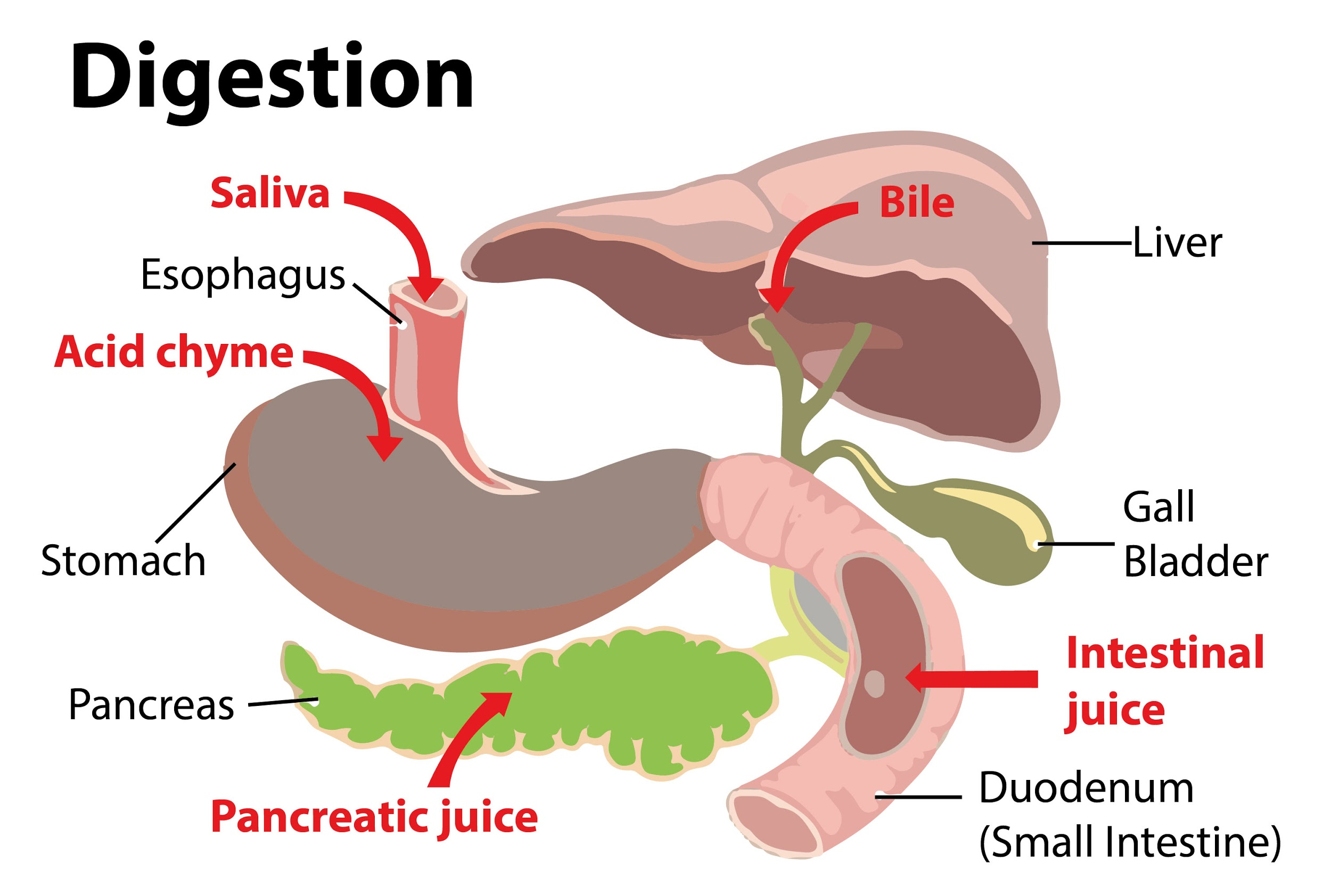
Succus entericus is the other name of
A. Gastric juice
B. Intestinal juice
C. Bile juice
D. Saliva
Answer
479.1k+ views
Hint: The digestive juice produced by the glands of the duodenal region which is alkaline in nature and helps in the digestion of various food particles by breaking the large particle into smaller and simple particles. It includes a mixture of enzymes.
Complete answer:
Succus entericus is also known as the intestinal juice which is secreted from the glands present in the duodenum of the small intestine. It consists of two enzymes maltase and amylase.
Additional Information: -Succus entericus is also known as the Crypts of Lieberkuhn
-They are the clear to pale yellow watery secretions from the glands lining the walls of the small intestine.
-The crypts of Lieberkuhn are the tubular glands that lie between the finger-like projections of the small intestine called villi.
-The function of succus entericus is to complete the process begun by the pancreatic juice.
-In pancreatic juice, enzyme trypsin is present in its inactive form called trypsinogen.
-The inactive trypsinogen is activated by intestinal enteritis in intestinal juice.
-Trypsin after its activation can activate other protease enzymes.
-Succus entericus also contains hormones, digestive enzymes, mucus, hydrochloric acid to neutralize the substances, and erepsin to complete protein digestion by breaking polypeptide chains into amino acids.
-Brunner’s gland secretes a large amount of mucus or juice which is alkaline in nature and helps in the process of digestion.

So, the correct answer is, ‘Intestinal juice.’
Note: The intestinal glands contain adult stem cells which are called intestinal stem cells. These stem cells have been used in the field of stem biology to understand the stem cell niches and to generate the intestinal organoids. The inflammation of crypts is known as cryptis and its severity may lead to crypt abscess.
Complete answer:
Succus entericus is also known as the intestinal juice which is secreted from the glands present in the duodenum of the small intestine. It consists of two enzymes maltase and amylase.
Additional Information: -Succus entericus is also known as the Crypts of Lieberkuhn
-They are the clear to pale yellow watery secretions from the glands lining the walls of the small intestine.
-The crypts of Lieberkuhn are the tubular glands that lie between the finger-like projections of the small intestine called villi.
-The function of succus entericus is to complete the process begun by the pancreatic juice.
-In pancreatic juice, enzyme trypsin is present in its inactive form called trypsinogen.
-The inactive trypsinogen is activated by intestinal enteritis in intestinal juice.
-Trypsin after its activation can activate other protease enzymes.
-Succus entericus also contains hormones, digestive enzymes, mucus, hydrochloric acid to neutralize the substances, and erepsin to complete protein digestion by breaking polypeptide chains into amino acids.
-Brunner’s gland secretes a large amount of mucus or juice which is alkaline in nature and helps in the process of digestion.

So, the correct answer is, ‘Intestinal juice.’
Note: The intestinal glands contain adult stem cells which are called intestinal stem cells. These stem cells have been used in the field of stem biology to understand the stem cell niches and to generate the intestinal organoids. The inflammation of crypts is known as cryptis and its severity may lead to crypt abscess.
Recently Updated Pages
One difference between a Formal Letter and an informal class null english null

Can anyone list 10 advantages and disadvantages of friction

What are the Components of Financial System?

How do you arrange NH4 + BF3 H2O C2H2 in increasing class 11 chemistry CBSE

Is H mCT and q mCT the same thing If so which is more class 11 chemistry CBSE

What are the possible quantum number for the last outermost class 11 chemistry CBSE

Trending doubts
The reservoir of dam is called Govind Sagar A Jayakwadi class 11 social science CBSE

What is the chemical name of Iron class 11 chemistry CBSE

The dimensional formula of dielectric strength A M1L1T2Q class 11 physics CBSE

The members of the Municipal Corporation are elected class 11 social science CBSE

What is spore formation class 11 biology CBSE

In China rose the flowers are A Zygomorphic epigynous class 11 biology CBSE




